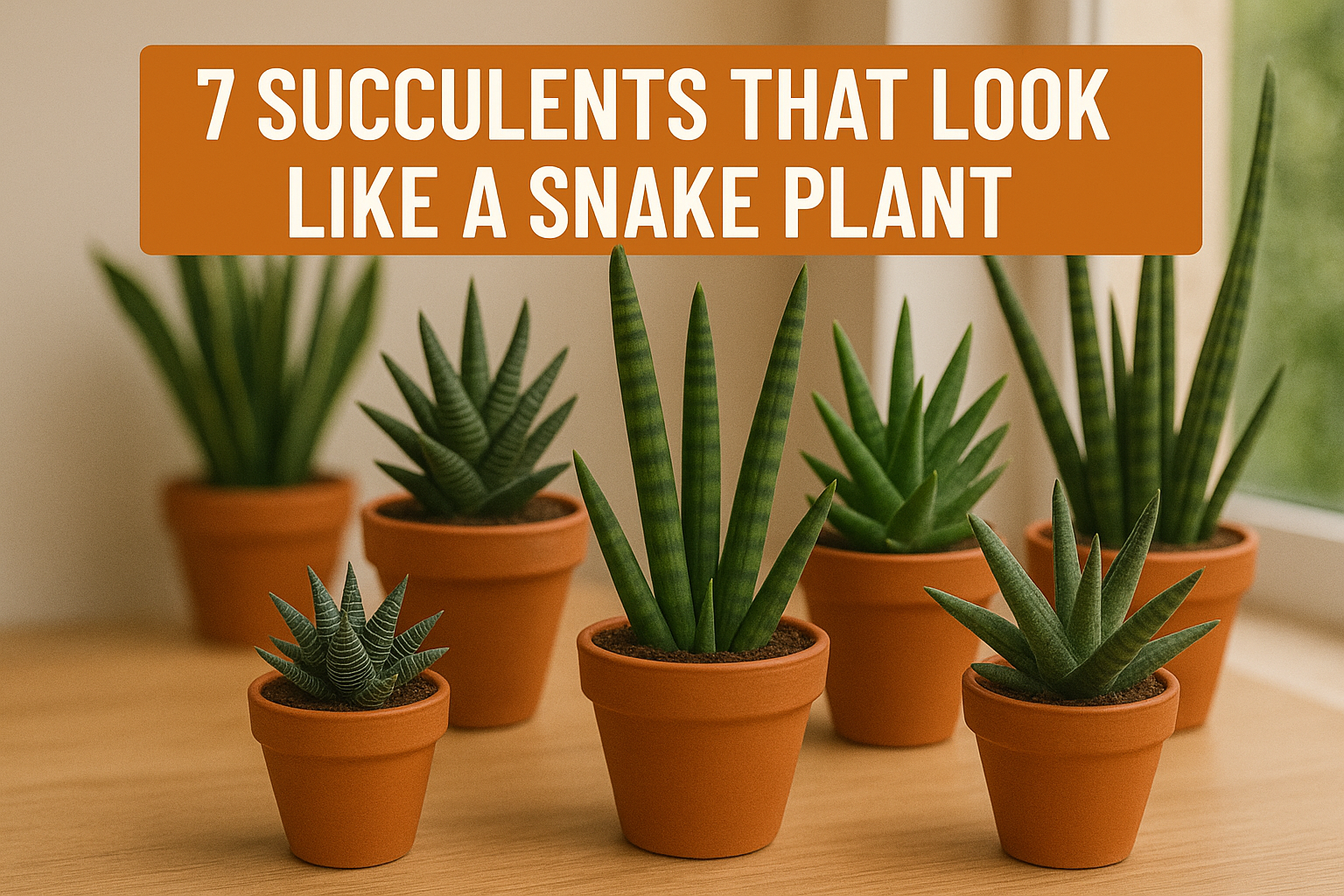The snake plant (also known as Sansevieria or Dracaena trifasciata) is beloved for its upright, sword-like leaves, low maintenance, and striking appearance. But if you’re looking to diversify your plant collection while keeping the same architectural style, several succulents resemble snake plants in form and function. These plants are just as hardy, stylish, and ideal for beginners or busy plant lovers.
Here are seven succulents that look like a snake plant and serve as easy, stylish alternatives.
1. Sansevieria Cylindrica (African Spear Plant)
Why It’s Similar:
Although technically a variety of snake plant, Sansevieria cylindrica deserves a mention of its own. Its tall, cylindrical leaves grow upright like spears, mimicking the vertical growth of traditional snake plants but with a more tubular, sculptural look.
Care Level:
Very low-maintenance. It thrives in indirect light and can tolerate long periods without water. It’s also drought-resistant and ideal for neglectful waterers.
Style Tip:
Use this plant in minimalist or modern interiors. Its geometric shape fits beautifully in sleek pots or grouped with other succulents.
2. Haworthiopsis Fasciata (Zebra Haworthia)
Why It’s Similar:
The Zebra Haworthia has firm, pointed leaves that rise in a rosette pattern. While more compact than a snake plant, its stiff, upright leaves and bold white striping give it a visually similar vibe.
Care Level:
Easy to care for. It prefers bright, indirect light and only occasional watering. Avoid overwatering to prevent root rot.
Style Tip:
Perfect for desktops, windowsills, or small spaces where you want a touch of greenery without the bulk.
3. Sansevieria Masoniana (Whale Fin Sansevieria)
Why It’s Similar:
Another member of the Sansevieria family, the Whale Fin gets its name from its large, paddle-shaped leaves that resemble a whale’s fin surfacing from the soil. It shares the same stiff, upright structure as the classic snake plant but with a more dramatic silhouette.
Care Level:
Thrives in various light conditions and needs infrequent watering. It’s ideal for beginners.
Style Tip:
Because of its bold size, use it as a statement piece in living rooms or entryways.
4. Aloe Vera (Aloe Barbadensis Miller)
Why It’s Similar:
Aloe Vera has fleshy, upright leaves that resemble some of the more compact snake plant varieties. It offers that same architectural form, along with the added bonus of medicinal uses.
Care Level:
Extremely easy. Aloe loves bright light and well-drained soil. Water only when the soil is completely dry.
Style Tip:
Pair it with other succulents in a shallow dish garden or keep it solo in a terra-cotta pot for a rustic, natural look.
5. Gasteria (Ox Tongue Plant)
Why It’s Similar:
Gasteria features thick, pointed leaves that can grow in a rosette or slightly upright form. Many varieties have variegated patterns and a stiff texture reminiscent of smaller snake plant species.
Care Level:
Very tolerant of low light and irregular watering. A great option for less sunny areas of the home.
Style Tip:
Its compact size and interesting texture make it ideal for bookshelves or bathroom counters.
6. Sansevieria Ballyi (Dwarf Snake Plant)
Why It’s Similar:
This miniature version of the snake plant has short, stiff leaves that grow in tight rosettes. It’s a great substitute if you love the look of snake plants but want something more petite.
Care Level:
Needs bright light and minimal watering. Like other Sansevierias, it’s almost impossible to kill.
Style Tip:
Try grouping several in a shallow container or placing one in a small ceramic planter for a compact accent.
7. Agave Attenuata (Foxtail Agave)
Why It’s Similar:
Agave has bold, architectural leaves that echo the snake plant’s upright and sword-like profile. Agave attenuata in particular is softer and curves more than other agaves, but still maintains that structural drama.
Care Level:
Agaves are sun lovers and drought-tolerant. They need good drainage and occasional watering.
Why Choose Snake Plant Alternatives?
1. Variety in Texture and Size
These succulents offer different sizes and textures, allowing you to create more dynamic displays. From the thick whale-fin leaves to compact zebra stripes, they each bring something unique while maintaining a cohesive visual style.
2. Just as Easy to Care For
All the plants listed here are low-maintenance, thriving with minimal water and able to tolerate a variety of light conditions. If you can keep a snake plant alive, you’ll have no trouble with these.
3. Great for Air Quality
Like snake plants, many of these alternatives help purify the air. They absorb toxins and release oxygen, making them functional as well as beautiful.
4. Pet Considerations
Be mindful that many Sansevierias and some succulents are toxic to pets. If you have cats or dogs that like to nibble, opt for non-toxic plants or place them out of reach.
Final Thoughts
Snake plants are timeless, but that doesn’t mean you have to stick with just one look. These seven succulents offer the same structural beauty, ease of care, and stylish flair. Whether you want something compact like a Zebra Haworthia, dramatic like a Whale Fin, or unique like an Agave, there’s a snake plant alternative that fits your space and style.
FAQ’s
1. What plant looks like a snake plant but is smaller?
The Dwarf Snake Plant (Sansevieria ballyi) is a miniature variety that mimics the look of a traditional snake plant but is more compact and perfect for small spaces
2. Are there succulents that grow upright like snake plants?
Yes, succulents like Sansevieria cylindrica, Agave attenuata, and Aloe Vera grow upright and maintain a tall, structural shape similar to snake plants.
3. Which snake plant alternative is best for low-light conditions?
Gasteria and Zebra Haworthia are excellent snake plant alternatives that tolerate low-light environments very well.
